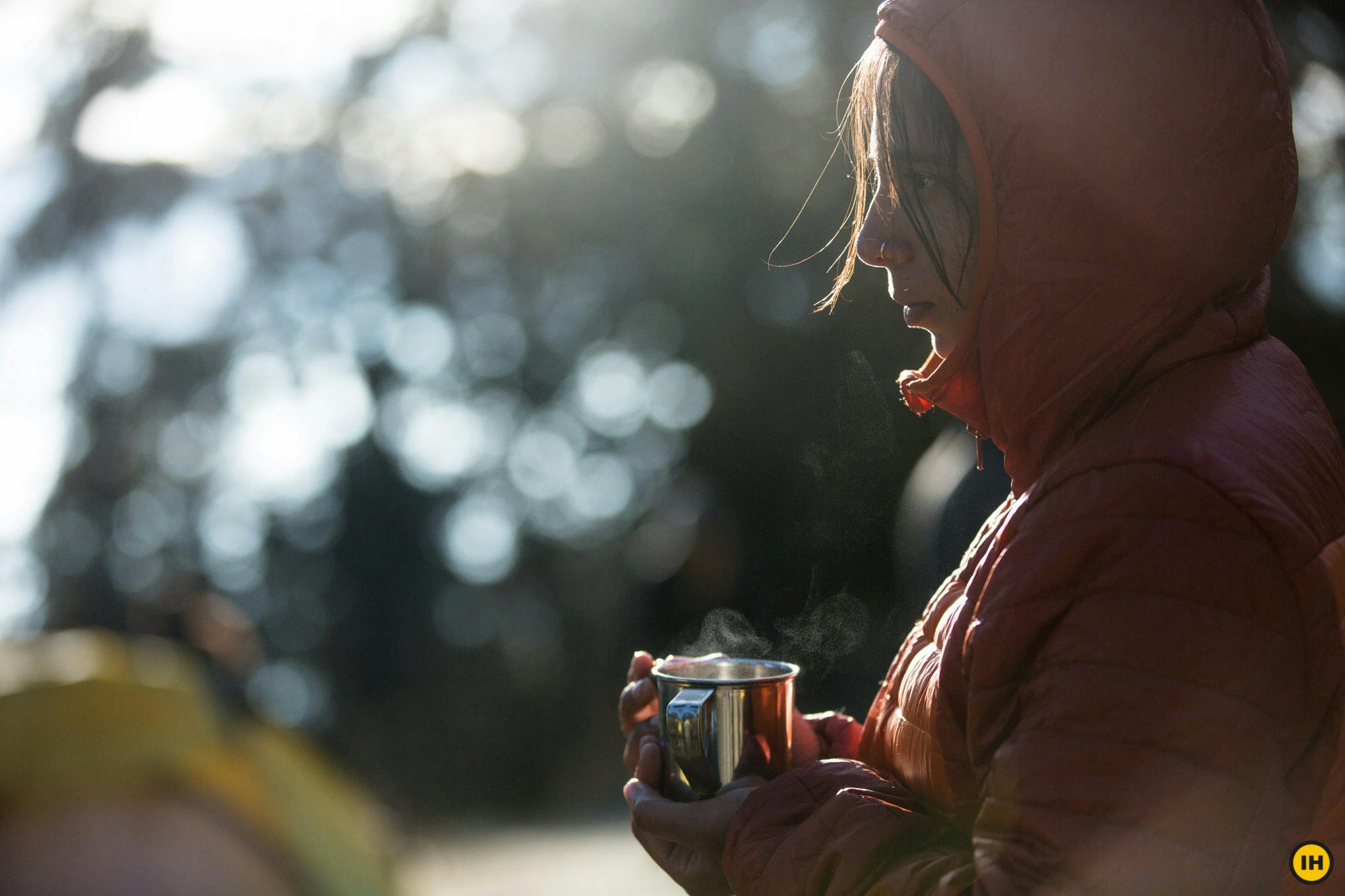What's The Best Cutlery For A Trek
Share this story
What's The Best Cutlery For A Trek
Category Gear Related Tips Trekking Tips Accessories
By Sneha Rao
2019-05-07
An often overlooked aspect of packing for a trek is cutlery. If you are trekking with Indiahikes, carrying your own cutlery on a trek is a given. It is all the more crucial when you are trekking solo.
I learnt the importance of packing cutlery efficiently the hard way.
On my Sandakphu Phalut trek, I fretted about forgetting to bring a plate. On cold, windy nights, I struggled to get the grease off my plastic tiffin box. I tried in vain to warm my hands on an insulated melamine coffee mug on chilly mornings.
I have seen far too many trekkers make the same mistake. In this post, I will show you how you can be more efficient with your cutlery.
How much cutlery do you need on a trek?
Every item that you carry adds to the weight and volume of your backpack. It’s as simple as that.
You don’t need plates, forks or a glass on a trek. Carry a single tiffin box, one spoon, one coffee mug and two water bottles. If you’d like to know why we ask trekkers to carry their own cutlery, read this post.
Your tiffin box can serve as a plate at campsites. If you are eating multiple items together, say rotis, curry and dal, you can use the lid as a plate and the box as a bowl. If there are multiple food items being served as packed lunch, the smartest thing to do is pool your resources with other trekkers – one of you can take the curry and the other, the rotis.
If, like me, you aren’t a great fan of rotis, you can make do with a coffee mug and a spoon for all your meals at campsites. Just mix the dal, rice and vegetables in it and gobble it up. You end up taking smaller servings each time and food stays hot for a longer time. This doesn’t mean you skip taking a tiffin box altogether – you will still need it for your packed lunches.
Similarly, your water bottle or coffee mug can double up as a glass. Use your coffee mug to drink tea, water and soup.
If you are trekking solo, add a knife and a small container for cooking to your list.
Go with steel rather than plastic
It pays to be selective about the material of the cutlery you take on a trek.
Steel is much easier to clean than plastic. When grease sticks on to plastic, no amount of scrubbing can get it off completely.
At high altitudes, where even boiling water cools down in a matter of minutes, you do not have the luxury of using copious amounts of hot water to wash your cutlery. When you use steel, you cut down on touching the freezing water, you save on water, soap and most importantly, time spent in the cold on washing your cutlery.
If you are trekking solo, steel is ideal for cooking your meals and heating water. Steel also has the added benefit of warming up your hands when you have hot food or tea poured into it.
Some of the other advantages of using steel over plastic are:
- Steel does not retain any odour of the food once you wash it.
- It is safer to pack hot food in steel containers than in plastic since chemicals do not leech on to it.
- Steel is far more durable than plastic.
This video on why steel cutlery is better than plastic on treks is helpful for you.
Get the size and shape right
It is easy to go overboard on the size of the tiffin box you take. Especially when you imagine having to carry food to last more than 5-6 hours while trekking. However, you don’t need anything bigger than a 400-500 ml box.
The amount of rice or vegetables that can fit into a box this size is more than enough for one person. Alternately, you can fold and keep at least 4-5 parathas or rotis in such a box. These are the items you usually need to carry as packed lunch.
If you carry a box that is bigger than this, you run the risk of overeating or wasting food. At the same time, a very small box will leave you underfed on the trek.
The shape of the box also matters. Stick to square or round boxes. For ease of packing and eating from, make sure they’re not deeper than 2-3 inches. Also, look for a box that is leak proof. That way, you do not have to worry about food or oil leaking into your backpack.
What is the best water bottle for a trek?
In addition to cutlery, make sure you carry your own water bottles on a high altitude trek. Take two of them, with a capacity of around one litre each.
This is important for two reasons –
- You avoid generating additional waste by not buying bottled mineral water.
- You are never stranded for water when you refill your own bottles at water sources on the trail.
If you are worried about the safety of the water that you fill, consider buying a portable water filter. With this, you can have clean drinking water and at the same time avoid littering with mineral water bottles.
Look for a bottle with a sipper. This ensures you sip water slowly rather than gulping it down. This is a safer way to drink water, especially when you are breathless and tired.
As in the case of cutlery, metal is always better than plastic for water bottles. It is safer to fill and store hot water in.
Carrying a thermos in place of a water bottle is a good idea on winter treks. If you don’t want to buy a flask specifically for a trek, you can always rent a thermos.
So the next time you are packing for a trek, remember to be efficient with your cutery. Do not over pack. Replace your plastic cutlery items with steel ones. Make sure your tiffin box is neither too big nor too small and is easy to pack.
If you have any more tips on the ideal cutlery to take on high altitude treks, share them in a comment below.
Sign up for our much loved Weekly Mailer
We have terrific trekking tips, trek updates and trek talks to look forward to

